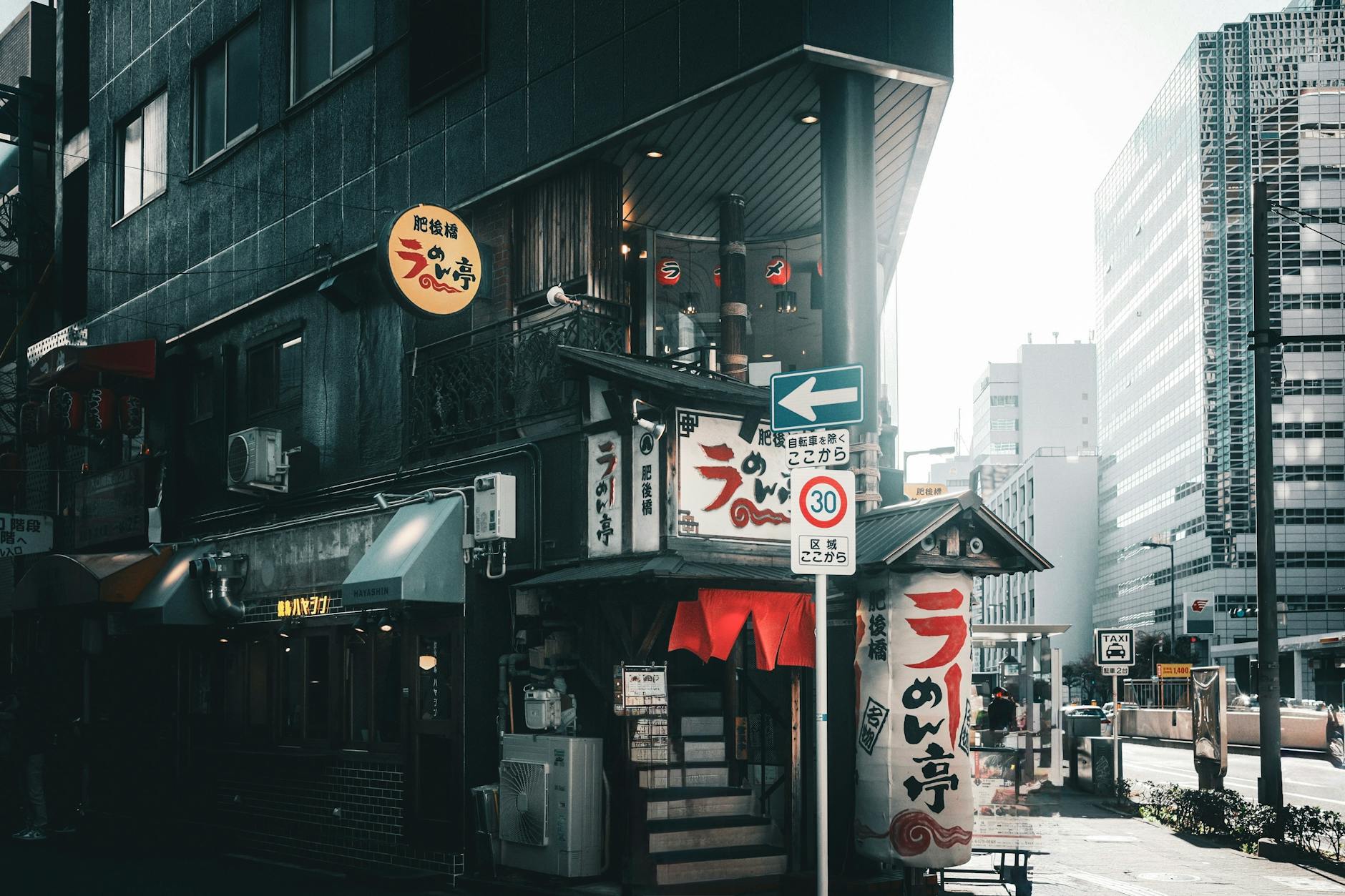There is a unique tension and energy that defines the atmosphere of a Japanese ramen shop. Upon entering a counter-style establishment—where the kitchen faces the diners directly—one is often struck by the sensation of stepping not merely into a restaurant, but onto a stage. Across a veil of steam stands the chef, silently focused, carefully assembling each bowl. The guests, seated just meters away, observe with quiet anticipation. The ramen counter becomes a space of wordless exchange—an elegant performance where Japanese hospitality and spatial aesthetics are distilled to their essence.
The counter format holds a distinguished place in Japan’s culinary tradition, shared by sushi, tempura, soba, and ramen alike. What sets it apart is the immediacy: the chef’s every movement is visible, deliberate, and precise. This transparency transforms each action into an act of presentation—making the preparation of the dish an integral part of the dining experience.
In ramen, this closeness elevates the meal from a simple act of service to an immersive, participatory encounter. The hiss of boiling water, the sway of noodles in the pot, the lift of a stockpot’s lid, the final drop of aromatic oil—each moment is sensorially rich, a quiet form of theatre that engages sight, sound, and scent alike.

In Japan, the act of “showing one’s hand” is often regarded as a mark of sincerity. The open-kitchen ramen counter is a perfect embodiment of this ethos. There is no pretense, no concealment—only calm, exacting movements performed in full view. The precise draining of noodles, the swift, harmonious plating, the unspoken fluency of every gesture—each act feels like a line of dialogue from the chef, and in response, the diner naturally sits a little straighter, attentive to the quiet tension that surrounds them.
This counter space is more than a place to eat; it is a refined environment designed for encountering food with intention. It reflects Japan’s cultural concept of ma—the space between people and objects, sound and silence. Every element, from the height of the stools and the distance to the kitchen, to the arrangement of condiments and the path from the ticket machine, is carefully considered to guide behavior and enhance comfort. Compact yet functional, restrained yet welcoming, the balance evokes parallels with the design philosophies of traditional tea rooms or intimate kappo establishments.
Another defining feature of the ramen counter is its unique form of hospitality—one marked by subtlety and attentiveness. Rather than vocal enthusiasm or conspicuous service, what matters most is the quiet observation of a guest’s needs. The timing of a glass of water, the discreet clearing of dishes, the choice to offer help—or not—all unfold through nuanced, unspoken interaction within the intimacy of the counter setting.
This design creates a kind of informal ritual for the diner: purchasing a ticket at the vending machine, sitting silently, watching the kitchen in motion, receiving the bowl with gratitude, and eating in focused reverence. Departing without a word, the customer leaves behind a sense of mutual respect—for the chef’s craft and for the carefully choreographed rhythm of the space.
Beyond the individual experience, the ramen counter also shapes interpersonal dynamics. Strangers sit side by side, absorbed in their own bowls, not exchanging words, yet sharing the same aroma and the ambient sound of boiling water and ladles at work. It is a quiet coexistence—one that reflects Japan’s cultural preference for communal presence over direct engagement, and in doing so, fosters a subtle sense of unity.

What is particularly fascinating is how Japan’s distinctive counter culture is now being thoughtfully reinterpreted abroad. Inspired by authentic Japanese ramen shops, restaurants around the world are adopting open kitchens and face-to-face counters, allowing guests to witness the choreography of preparation and savor the immediacy of the culinary craft. This shift reflects a deeper appreciation—not just for the food itself, but for the intentional design of the space in which it is eaten. It is the quiet influence of Japanese aesthetics, where every detail serves a purpose.
The ramen counter is not merely a place to sit. It is a theater where the soul of the chef and the senses of the guest converge—a stage upon which the story of each bowl is composed in real time. The dialogue is mostly silent, carried through gestures, timing, and presence. The chef’s back, the movement of their hands, the unspoken rhythm—all speak more eloquently than words.
At the center of this stage, there is always a single bowl. Rising steam, shimmering aromatic oils, perfectly aligned noodles—within that bowl lies the accumulation of a chef’s craft and their focused attention in the present moment. To receive it across the counter is to participate in a subtle but profound exchange—one imbued with a unique sense of ma, the Japanese sensibility of space and timing, that defines ramen as more than a meal.
The ramen counter is a small theater embedded in daily life. And as diners, we become quiet participants in its performance—each bowl an act, each visit a moment of presence within a beautifully orchestrated space.




